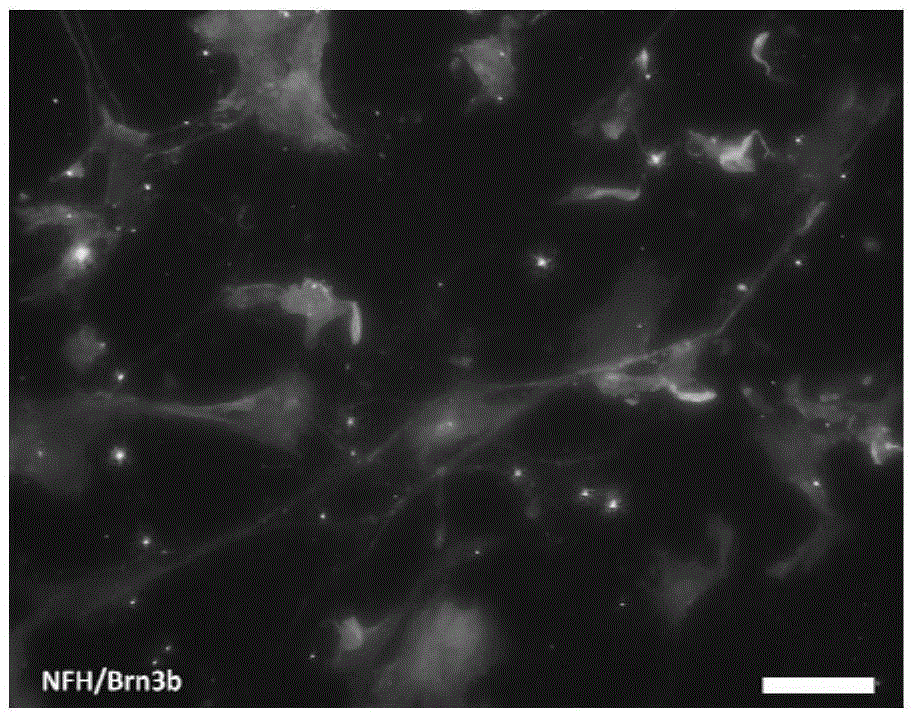Method for directionally differentiating human iPSCs (induced pluripotent stem cells)-derived 3D (three-dimensional) retinas by means of induction to obtain retinal ganglion cells
A retinal ganglion, induced differentiation technology, applied in the fields of developmental biology and biomedical engineering, can solve the problem of low induction function of the source of seed cells
- Summary
- Abstract
- Description
- Claims
- Application Information
AI Technical Summary
Problems solved by technology
Method used
Image
Examples
Embodiment 1
[0020] 1. Human iPSc-derived 3D retinal isolation and digestion:
[0021] Using the method of mechanical separation, the nerve fiber layer of human iPSc-derived 3D retina cultured for 50-55 days (specific preparation method reference: XiufengZhong, etal. -In Hanks solution, use a 0.45mm needle to separate the tissue under a 50-fold upright microscope, discard the pigmented part (pigment layer) in the retinal tissue, and keep the golden yellow tissue part (nerve fiber layer); separate the nerve fiber layer tissue Use a pipette to transfer to a 3.5cm culture dish, rinse with PBS for 10 minutes; absorb the PBS, digest the cells with accutase cell digestion solution, and place them in a 37°C incubator for 30 minutes; at the end of the process, the cells can be sucked into the centrifuge tube and blown at 10 Under a magnified upright microscope, it was seen that the cell mass was digested into a single cell, and then 2ml of induction differentiation medium was added to terminate th...
PUM
 Login to View More
Login to View More Abstract
Description
Claims
Application Information
 Login to View More
Login to View More - R&D
- Intellectual Property
- Life Sciences
- Materials
- Tech Scout
- Unparalleled Data Quality
- Higher Quality Content
- 60% Fewer Hallucinations
Browse by: Latest US Patents, China's latest patents, Technical Efficacy Thesaurus, Application Domain, Technology Topic, Popular Technical Reports.
© 2025 PatSnap. All rights reserved.Legal|Privacy policy|Modern Slavery Act Transparency Statement|Sitemap|About US| Contact US: help@patsnap.com



